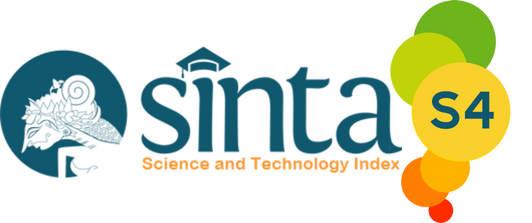Pemberdayaan Desa Wisata Samiran Boyolali (Dewi Sambi) berdasarkan Teori Analisis Talc (Tourism Area Life Cycle)
Abstract
Research on the development conditions of the Samiran Boyolali (Dewi Sambi) tourism village based on the TALC (Tourism Area Life Cycle) analysis theory is a descriptive qualitative study. The research location was determined purposively in Samiran Village, with the consideration that the Samiran tourism village was the first tourism village formed in Selo District together with the Lencoh tourism village in 2002. The purpose of this study was to investigate the process of empowering Dewi Sambi and identify the development of Dewi Sambi based on theory TALC. The determination of the informants was carried out by purposive sampling for key informants, while the advanced informants used snowball techniques based on recommendations from key informants. The number of informants in this study were 7 people including community leaders, village heads, managers, and members of Dewi Sambi. The data analysis technique of this research used the interactive inductive analysis method. Meanwhile, the validity of research data uses triangulation of sources and informant reviews. The results showed that the process of empowering Dewi Sambi went through 3 stages, namely the stage of awareness, breathing and power. These three stages were passed with the result that most of the people of Samiran Village joined Dewi Sambi and negative behavior began to wear off. The results of research on the development conditions of Dewi Sambi based on TALC, show that this tourism village is in a consolidation phase. The main characteristics that appear are the implementation according to regulations, the number of tourists fluctuating but tends to increase according to tourist visit chart, and the role of the ministry or government to improve services to tourist guests.
Keywords
Full Text:
PDFReferences
Andriyani, A. A. I., & Edhi, M. M. (2017). Pemberdayaan Masyarakat melalui Pengembangan Desa Wisata dan Implikasinya terhadap Ketahanan Sosial Budaya Wilayah (Studi Kasus di Desa Wisata Penglipuran Bali). Jurnal Ketahanan Sosial 23(1) : 1-16.
Arifudin, Besri, N., & Maswadi. (2013). Program of Community Empowerment Prevents Forest Fires in Indonesian Peat Land. International Journal of Procedia Environmental Sciences 17 : 129 – 134.
Atmoko, T. P. H. (2014). Strategi Pengembangan Potensi Desa Wisata Brajan Kabupaten Sleman. Jurnal Media Wisata 12(2) : 146 -154
Bafadhal, A. S. (2018). Perencanaan Bisnis Pariwisata (Pendekatan Lean Planning). Malang : UB Press.
Beeton, S. (2006). Community Development Through Tourism. Oxford Street : Landlinks Press.
Butler Richard, W. (2006). The Tourism Area Life Cycle Vol. 1 Application and Modification. Dufferin Street : Cromwell Press.
Darwis, V. (2012). Gerakan Kemandirian Pangan melalui Program Desa Mandiri Pangan : Analisis Kinerja dan Kendala. Jurnal Analisis Kebijakan Pertanian 10(2) : 159-179.
Febriani, N. N. S., I Gede, A.W., & Wayan, T. (2014). Kajian Potensi Pasar Seni Sukawati sebagai Objek Wisata Budaya di Desa Sukawati Kecamatan Sukawati Kabupaten Gianyar (Tinjauan Geografi Pariwisata). Jurnal Pendidikan Geografi Undiksha 2(1) : 1-10.
Hermawan, H. (2016). Dampak Pengembangan Desa Wisata Nglanggeran terhadap Ekonomi Masyarakat Lokal. Jurnal Pariwisata 3(2) : 105-117.
Jamalina, I. A., & Dyah, T. K. W. (2017). Strategi Pengembangan Ekowisata melalui Konsep Community Based Tourism (CBT) dan Manfaat Sosial dan Ekonomi Bagi Masyarakat di Desa Wisata Nglanggeran, Patuk, Gunung Kidul. Jurnal Ekonomi & Studi Pembangunan 18(1) : 771-85.
Rani, D. P. M. (2014). Pengembangan Potensi Pariwisata Kabupaten Sumenep, Madura, Jawa Timur. Jurnal Politik Muda 3(3) : 412-421.
Steiner, A. A., & Farmer, J. (2017). Engage, Participate, Empower: Modelling Power Transfer In Disadvantaged Rural Communities Environ. Plan. C: Polit. International Journal of Space 36 (1) : 118-138
Sugiyono. (2010). Metode Penelitian Kuantitatif, Kualitatif dan R&D. Bandung: CV. Alfabeta.
Sururi, A. (2013). Pemberdayaan Masyarakat melalui Program Pembangunan Infrastruktur Pedesaan dalam Meningkatkan Kesejahteraan Masyarakat Kecamatan Wanasalam Kabupaten Lebak. Jurnal Administrasi Negara 3(2) : 1-25.
Sutawa, G. K. (2012). Issues on Bali Tourism Development and Community Empowerment to Support Sustainable Tourism Development. International Journal of Procedia Economics and Finance 4 : 413-422.Suryaningsih IAA, Ida BS. 2016. Posisi Desa Serangan Berdasarkan Analisis Tourism Area Life Cycle. Jurnal Destinasi Pariwisata 4(2) : 1-6.
Wahyuni, D. (2018). Strategi Pemberdayaan Masyarakat dalam Pengembangan Desa Wisata Nglanggeran, Kabupaten Gunung Kidul. Jurnal Masalah-masalah Sosial 9(1) : 83-100.
Wibowo. (2017). Rebranding Desa Wisata Kembang Arum untuk Meningkatkan Daya Saing Daerah di Bidang Pariwisata. Jurnal Dekave 10(1) : 61-72.
Wrihatnolo, R. R., & Dwidjowijoto, R. N. (2007). Manajemen Pemberdayaan. Jakarta : Elek Media Komputindo.
Zakaria, E. R., Murni, S., & Dedy, N. (2014). Analisis Posisi Keuangan. Jurnal Antara Bank Syariah dan Bank Konvensional di Indonesia 2(4).
Refbacks
- There are currently no refbacks.






